DODGE CALIBER 2008 1.G Owners Manual
Manufacturer: DODGE, Model Year: 2008, Model line: CALIBER, Model: DODGE CALIBER 2008 1.GPages: 402, PDF Size: 6.37 MB
Page 221 of 402
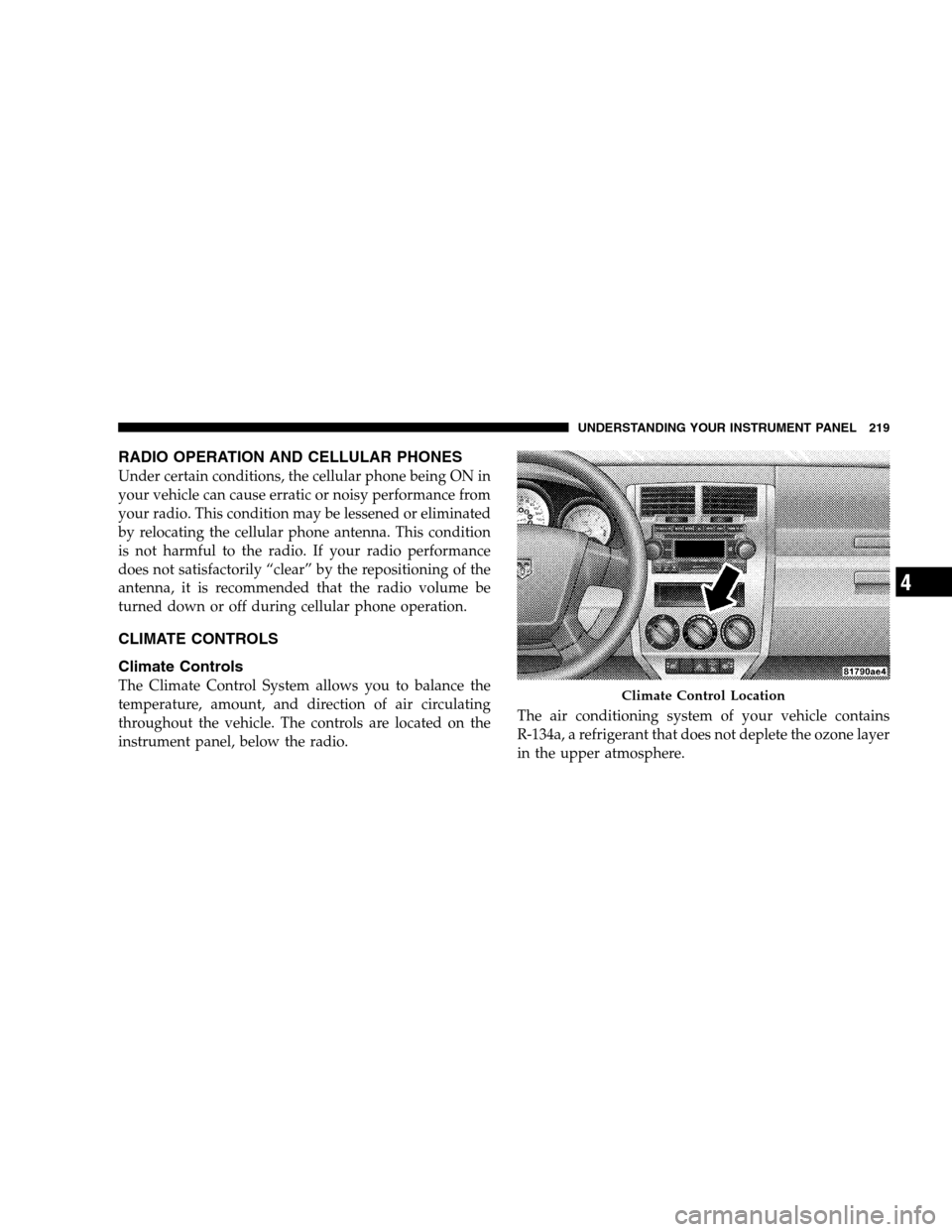
RADIO OPERATION AND CELLULAR PHONES
Under certain conditions, the cellular phone being ON in
your vehicle can cause erratic or noisy performance from
your radio. This condition may be lessened or eliminated
by relocating the cellular phone antenna. This condition
is not harmful to the radio. If your radio performance
does not satisfactorily “clear” by the repositioning of the
antenna, it is recommended that the radio volume be
turned down or off during cellular phone operation.
CLIMATE CONTROLS
Climate Controls
The Climate Control System allows you to balance the
temperature, amount, and direction of air circulating
throughout the vehicle. The controls are located on the
instrument panel, below the radio.The air conditioning system of your vehicle contains
R-134a, a refrigerant that does not deplete the ozone layer
in the upper atmosphere.Climate Control Location
UNDERSTANDING YOUR INSTRUMENT PANEL 219
4
Page 222 of 402
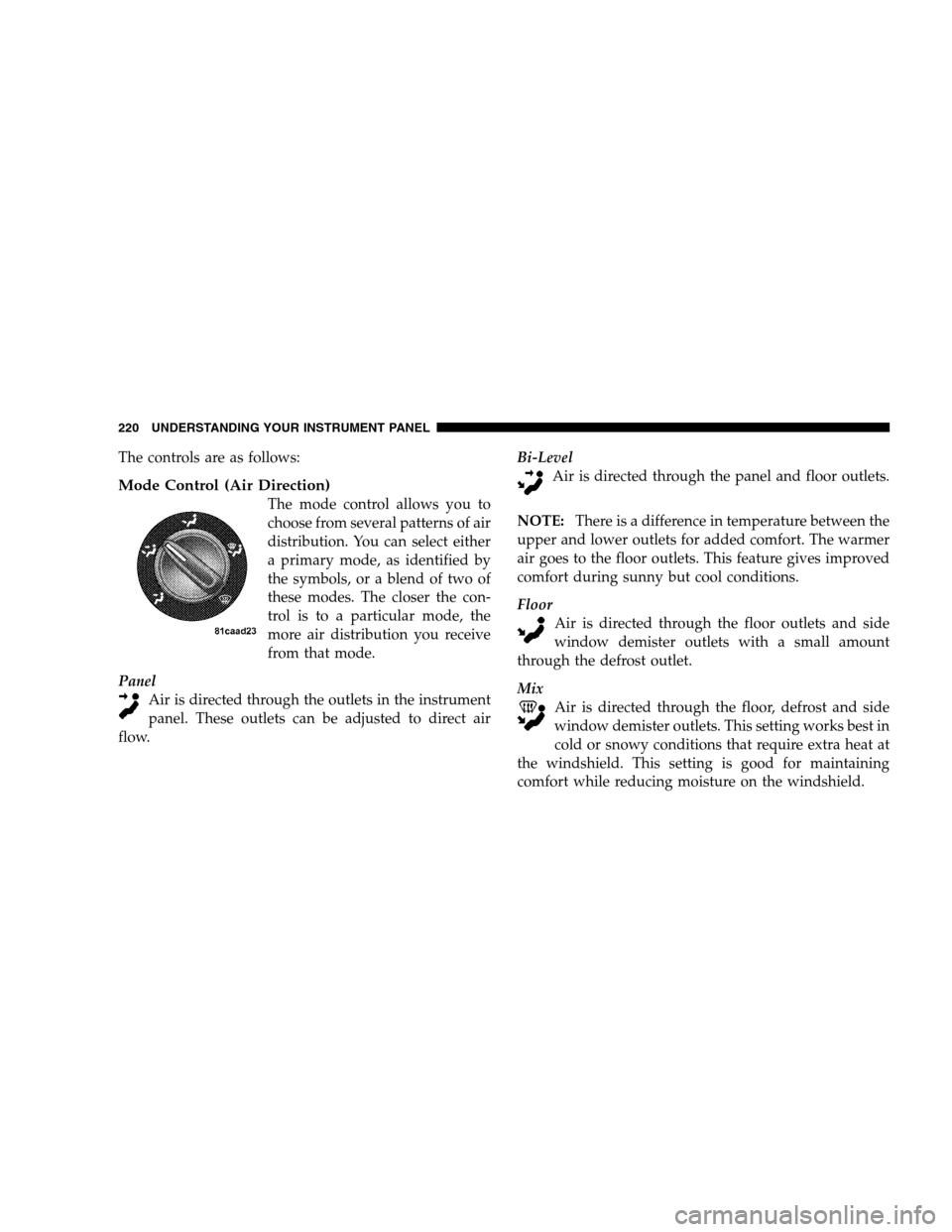
The controls are as follows:
Mode Control (Air Direction)
The mode control allows you to
choose from several patterns of air
distribution. You can select either
a primary mode, as identified by
the symbols, or a blend of two of
these modes. The closer the con-
trol is to a particular mode, the
more air distribution you receive
from that mode.
Panel
Air is directed through the outlets in the instrument
panel. These outlets can be adjusted to direct air
flow.Bi-Level
Air is directed through the panel and floor outlets.
NOTE:There is a difference in temperature between the
upper and lower outlets for added comfort. The warmer
air goes to the floor outlets. This feature gives improved
comfort during sunny but cool conditions.
Floor
Air is directed through the floor outlets and side
window demister outlets with a small amount
through the defrost outlet.
Mix
Air is directed through the floor, defrost and side
window demister outlets. This setting works best in
cold or snowy conditions that require extra heat at
the windshield. This setting is good for maintaining
comfort while reducing moisture on the windshield.
220 UNDERSTANDING YOUR INSTRUMENT PANEL
Page 223 of 402
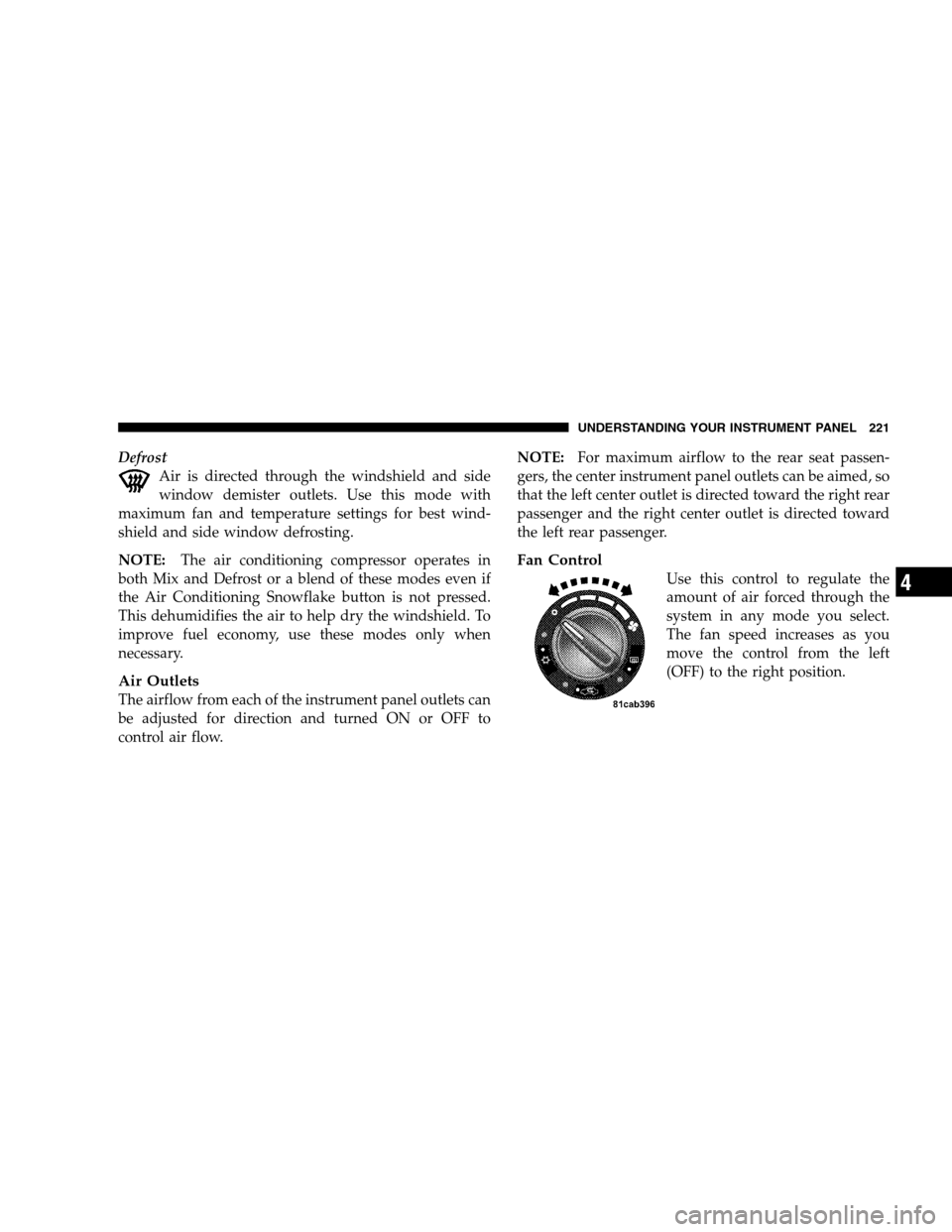
Defrost
Air is directed through the windshield and side
window demister outlets. Use this mode with
maximum fan and temperature settings for best wind-
shield and side window defrosting.
NOTE:The air conditioning compressor operates in
both Mix and Defrost or a blend of these modes even if
the Air Conditioning Snowflake button is not pressed.
This dehumidifies the air to help dry the windshield. To
improve fuel economy, use these modes only when
necessary.
Air Outlets
The airflow from each of the instrument panel outlets can
be adjusted for direction and turned ON or OFF to
control air flow.NOTE:For maximum airflow to the rear seat passen-
gers, the center instrument panel outlets can be aimed, so
that the left center outlet is directed toward the right rear
passenger and the right center outlet is directed toward
the left rear passenger.
Fan Control
Use this control to regulate the
amount of air forced through the
system in any mode you select.
The fan speed increases as you
move the control from the left
(OFF) to the right position.
UNDERSTANDING YOUR INSTRUMENT PANEL 221
4
Page 224 of 402
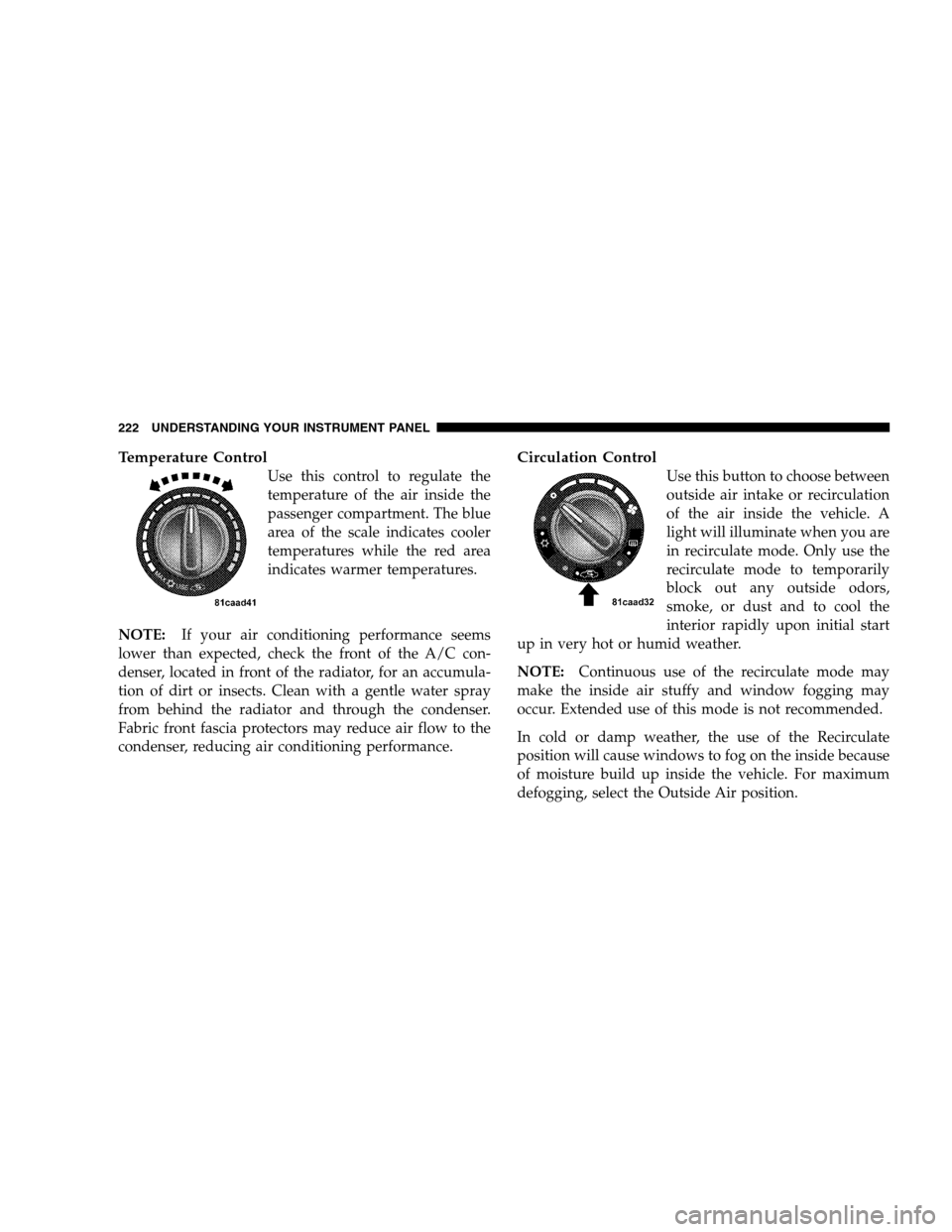
Temperature Control
Use this control to regulate the
temperature of the air inside the
passenger compartment. The blue
area of the scale indicates cooler
temperatures while the red area
indicates warmer temperatures.
NOTE:If your air conditioning performance seems
lower than expected, check the front of the A/C con-
denser, located in front of the radiator, for an accumula-
tion of dirt or insects. Clean with a gentle water spray
from behind the radiator and through the condenser.
Fabric front fascia protectors may reduce air flow to the
condenser, reducing air conditioning performance.
Circulation Control
Use this button to choose between
outside air intake or recirculation
of the air inside the vehicle. A
light will illuminate when you are
in recirculate mode. Only use the
recirculate mode to temporarily
block out any outside odors,
smoke, or dust and to cool the
interior rapidly upon initial start
up in very hot or humid weather.
NOTE:Continuous use of the recirculate mode may
make the inside air stuffy and window fogging may
occur. Extended use of this mode is not recommended.
In cold or damp weather, the use of the Recirculate
position will cause windows to fog on the inside because
of moisture build up inside the vehicle. For maximum
defogging, select the Outside Air position.
222 UNDERSTANDING YOUR INSTRUMENT PANEL
Page 225 of 402
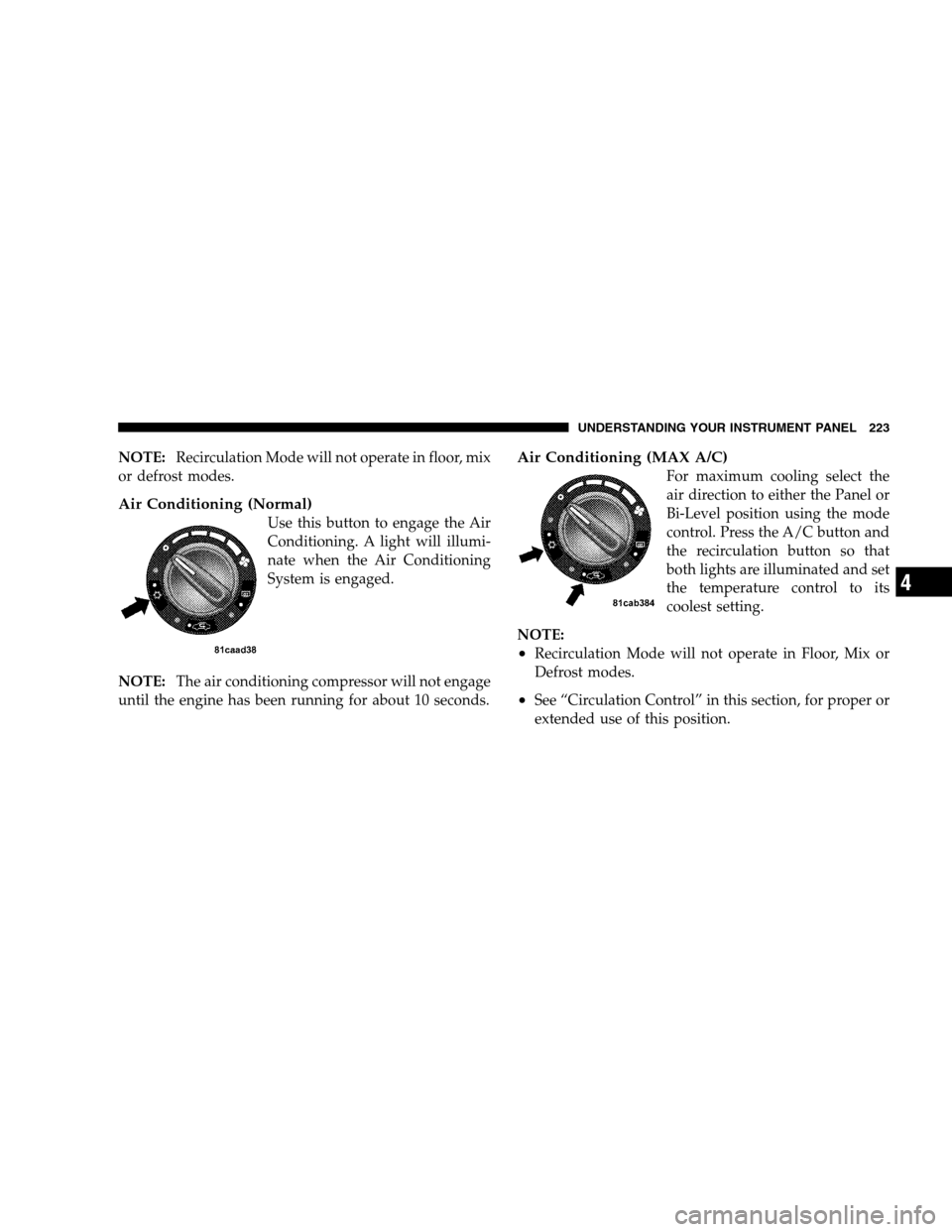
NOTE:Recirculation Mode will not operate in floor, mix
or defrost modes.
Air Conditioning (Normal)
Use this button to engage the Air
Conditioning. A light will illumi-
nate when the Air Conditioning
System is engaged.
NOTE:The air conditioning compressor will not engage
until the engine has been running for about 10 seconds.
Air Conditioning (MAX A/C)
For maximum cooling select the
air direction to either the Panel or
Bi-Level position using the mode
control. Press the A/C button and
the recirculation button so that
both lights are illuminated and set
the temperature control to its
coolest setting.
NOTE:
•Recirculation Mode will not operate in Floor, Mix or
Defrost modes.
•See “Circulation Control” in this section, for proper or
extended use of this position.
UNDERSTANDING YOUR INSTRUMENT PANEL 223
4
Page 226 of 402
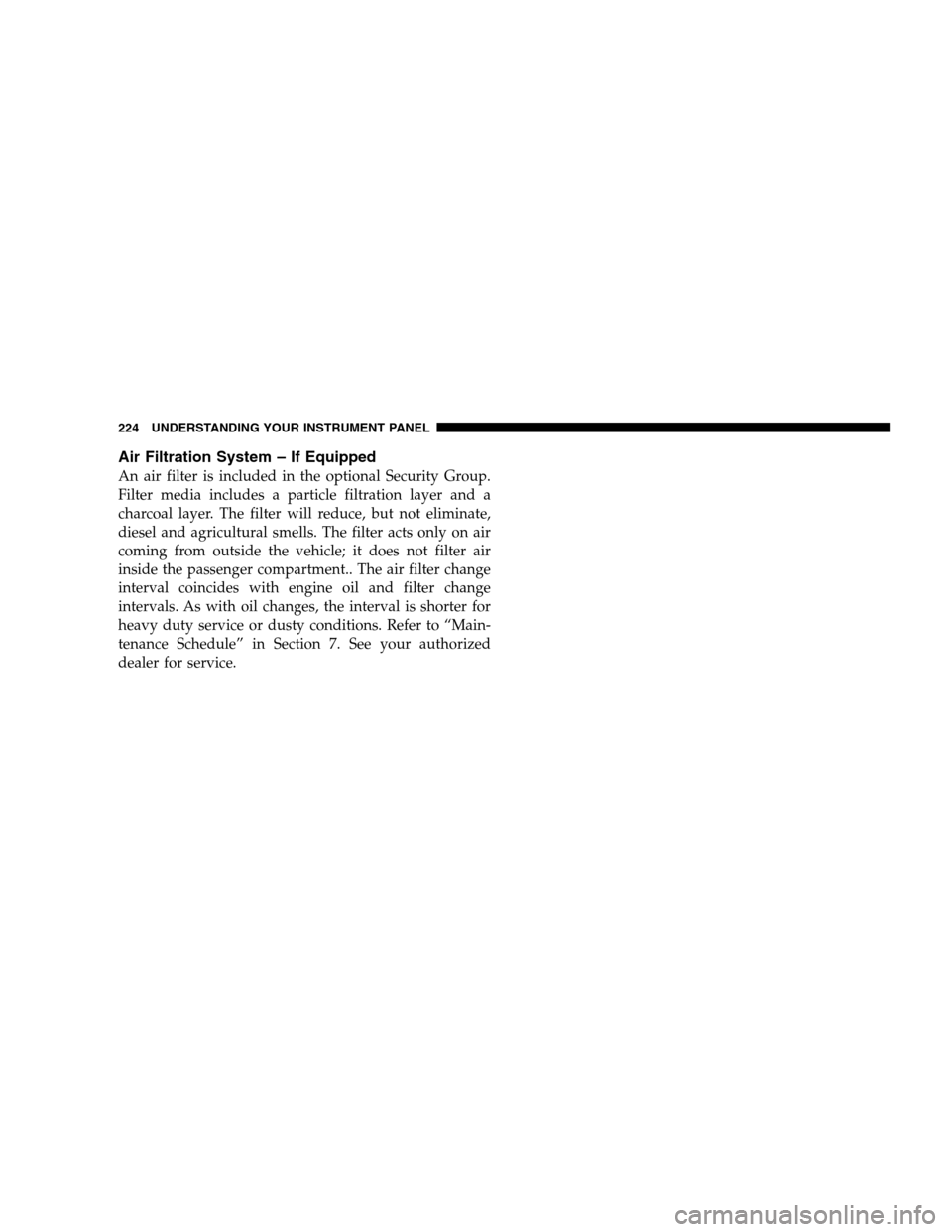
Air Filtration System – If Equipped
An air filter is included in the optional Security Group.
Filter media includes a particle filtration layer and a
charcoal layer. The filter will reduce, but not eliminate,
diesel and agricultural smells. The filter acts only on air
coming from outside the vehicle; it does not filter air
inside the passenger compartment.. The air filter change
interval coincides with engine oil and filter change
intervals. As with oil changes, the interval is shorter for
heavy duty service or dusty conditions. Refer to “Main-
tenance Schedule” in Section 7. See your authorized
dealer for service.
224 UNDERSTANDING YOUR INSTRUMENT PANEL
Page 227 of 402
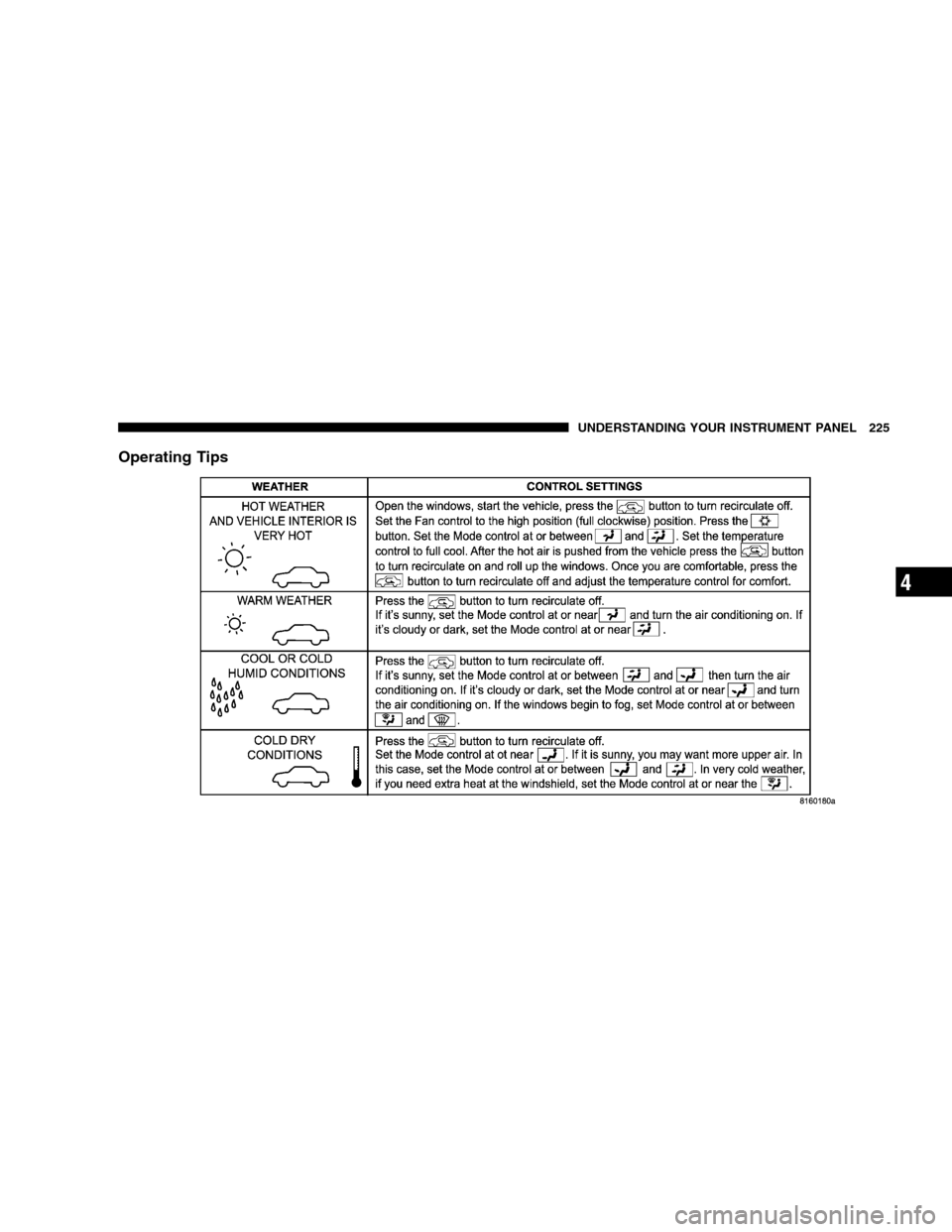
Operating Tips
UNDERSTANDING YOUR INSTRUMENT PANEL 225
4
Page 228 of 402

Window Fogging
Vehicle side windows tend to fog on the inside in mild
rainy or humid weather. To clear the windows, set mode
to the mix or defrost position. Direct the panel outlets
toward the side windows. Do not use recirculate without
A/C for long periods as fogging may occur.
Interior fogging on the windshield can be quickly re-
moved by using the defrost position.
If the fogging problem persists, clean the inside window
surfaces. The cause of undue fogging may be dirt collect-
ing on the inside surface of the glass
NOTE:In cold weather, the use of the recircu-
late position will cause windows to fog on the
inside because of moisture build up inside the
vehicle. Moisture and ice can also accumulate
on the inside of the sheet metal and may result inheadliner and/or electronic component damage. For
maximum defogging, press the recirculation button until
recirculate is off.
Summer Operation
Air conditioned vehicles must be protected with a high-
quality antifreeze coolant to provide proper corrosion
protection and to raise the boiling point of the coolant for
protection against overheating. A 50% concentration is
recommended.
Outside Air Intake
When operating the system during the winter months,
make sure the air intake, directly in front of the wind-
shield, is free of ice, slush, snow or other obstructions
such as leaves. Leaves collected in the air-intake plenum
may reduce air flow and plug the plenum water drains.
The blower air will heat faster in cold weather if you use
only a low blower speed for the first few minutes of
vehicle operation.
226 UNDERSTANDING YOUR INSTRUMENT PANEL
Page 229 of 402
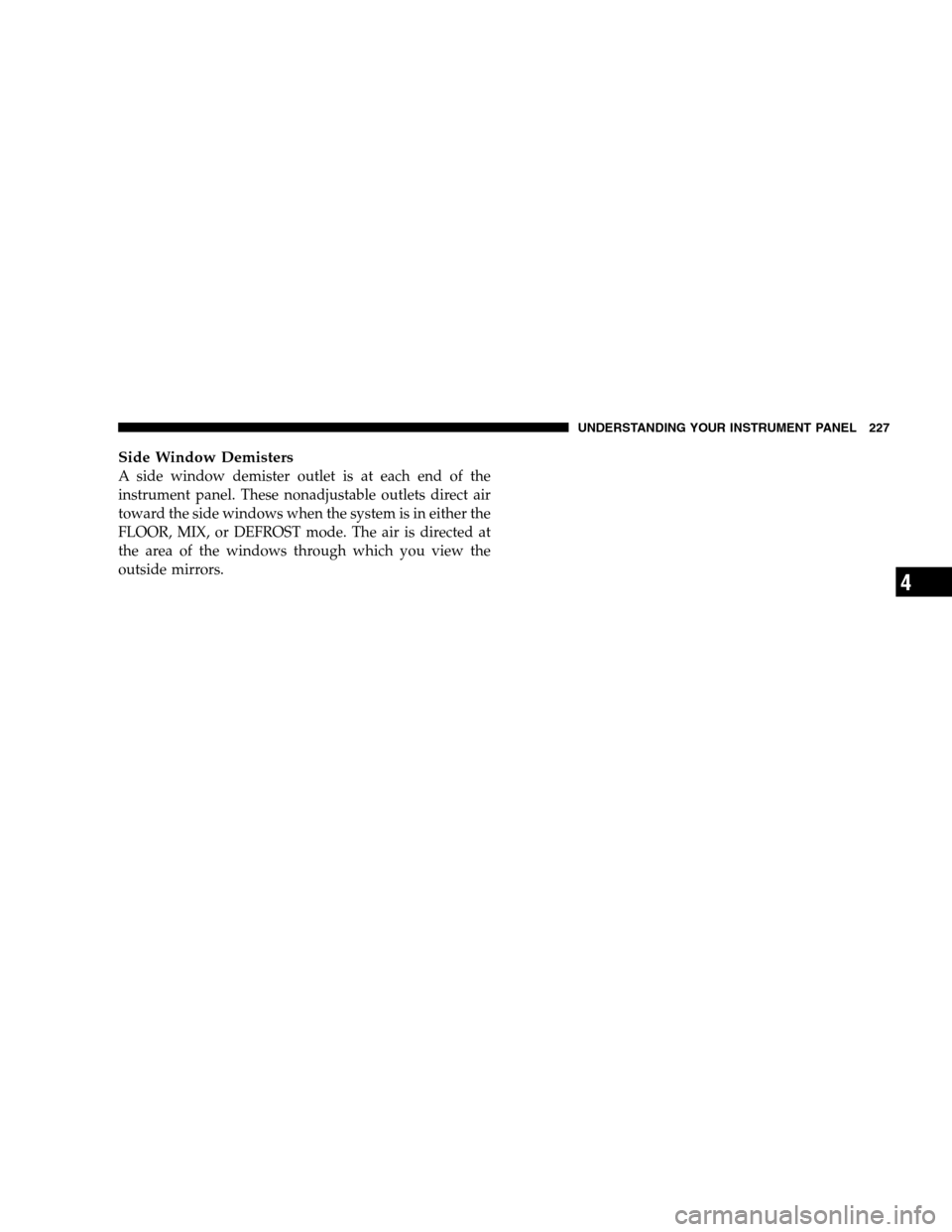
Side Window Demisters
A side window demister outlet is at each end of the
instrument panel. These nonadjustable outlets direct air
toward the side windows when the system is in either the
FLOOR, MIX, or DEFROST mode. The air is directed at
the area of the windows through which you view the
outside mirrors.
UNDERSTANDING YOUR INSTRUMENT PANEL 227
4
Page 230 of 402
